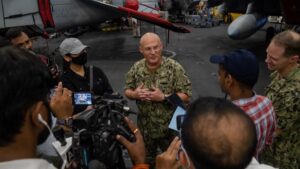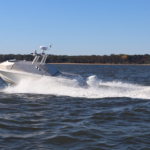
Two Biden administration officials this week said there is a “huge potential” to expand AUKUS Pillar Two technology sharing and cooperation in the future. While the U.S., U.K. and Australian governments announced an “optimal pathway” to help Australia build and field its own nuclear-powered attack submarines under the AUKUS agreement in March, the agreement also includes a second set of non-nuclear submarine technology sharing called Pillar Two (Defense Daily, March 13). Last year, a joint statement issued by President Biden,…

 By
By 











